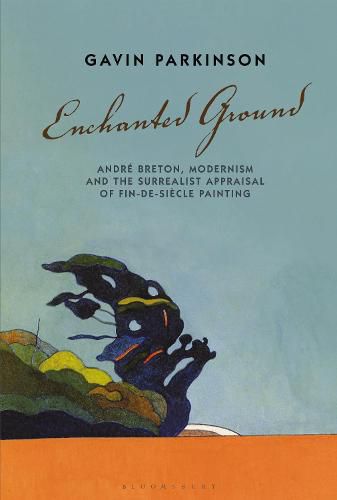Readings Newsletter
Become a Readings Member to make your shopping experience even easier.
Sign in or sign up for free!
You’re not far away from qualifying for FREE standard shipping within Australia
You’ve qualified for FREE standard shipping within Australia
The cart is loading…






Enchanted Ground is about the challenge to modernist criticism by Surrealist writers-mainly Andre Breton but also Louis Aragon, Pierre Mabille, Rene Magritte, Charles Estienne, Rene Huyghe and others-who viewed the same artists in terms of magic, occultism, precognition, alchemy and esotericism generally. It introduces the history of the ways in which those artists who came after Impressionism-Paul Cezanne, Pierre-Auguste Renoir, Georges Seurat, Paul Gauguin, Vincent van Gogh-became canonical in the 20th century through the broad approaches we now call modernist or formalist (by critics and curators such as Alfred H. Barr, Roger Fry, Robert Goldwater, Clement Greenberg, John Rewald and Robert L. Herbert), and then unpacks chapter-by-chapter, for the first time in a single volume, the Surrealist positions on the same artists. To this end, it contributes to new strains of scholarship on Surrealism that exceed the usual bounds of the 1920s and 1930s and that examine the fascination within the movement with magic.
$9.00 standard shipping within Australia
FREE standard shipping within Australia for orders over $100.00
Express & International shipping calculated at checkout
Enchanted Ground is about the challenge to modernist criticism by Surrealist writers-mainly Andre Breton but also Louis Aragon, Pierre Mabille, Rene Magritte, Charles Estienne, Rene Huyghe and others-who viewed the same artists in terms of magic, occultism, precognition, alchemy and esotericism generally. It introduces the history of the ways in which those artists who came after Impressionism-Paul Cezanne, Pierre-Auguste Renoir, Georges Seurat, Paul Gauguin, Vincent van Gogh-became canonical in the 20th century through the broad approaches we now call modernist or formalist (by critics and curators such as Alfred H. Barr, Roger Fry, Robert Goldwater, Clement Greenberg, John Rewald and Robert L. Herbert), and then unpacks chapter-by-chapter, for the first time in a single volume, the Surrealist positions on the same artists. To this end, it contributes to new strains of scholarship on Surrealism that exceed the usual bounds of the 1920s and 1930s and that examine the fascination within the movement with magic.